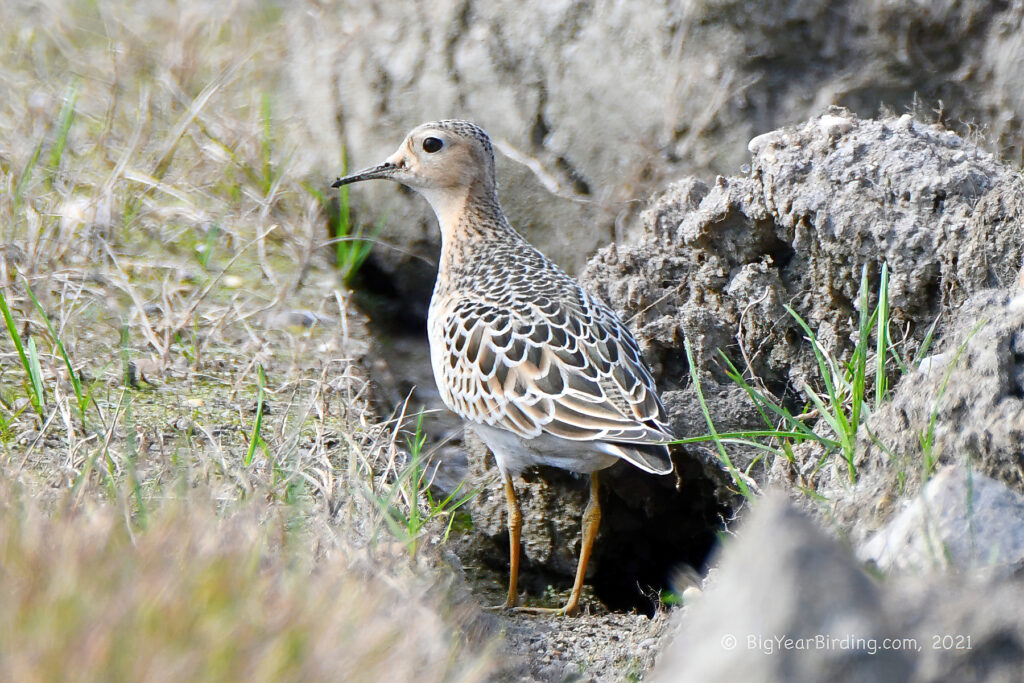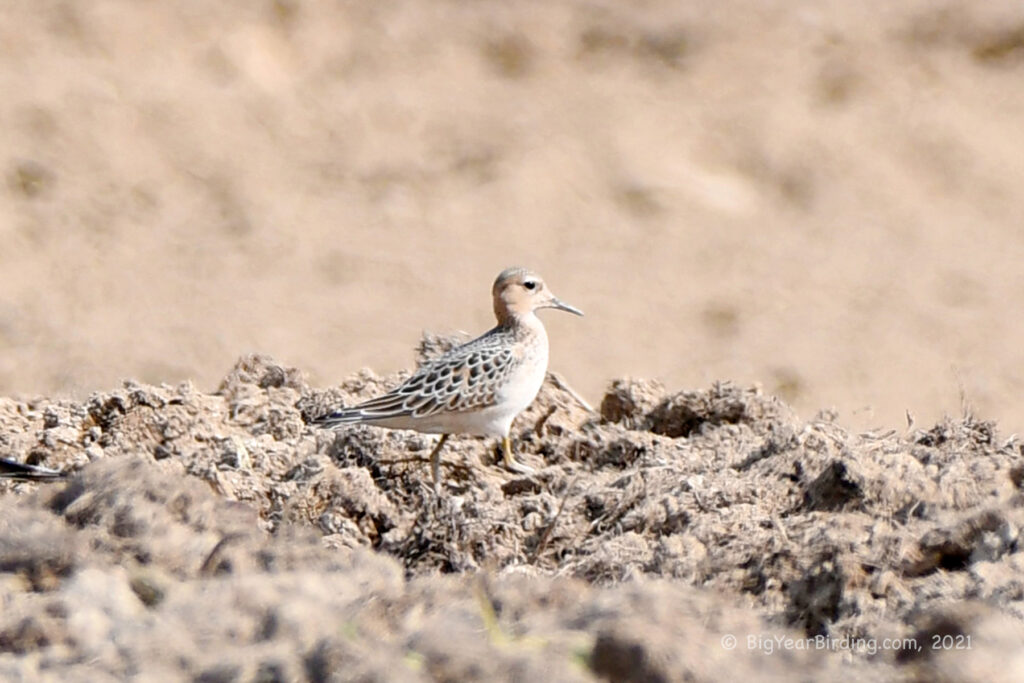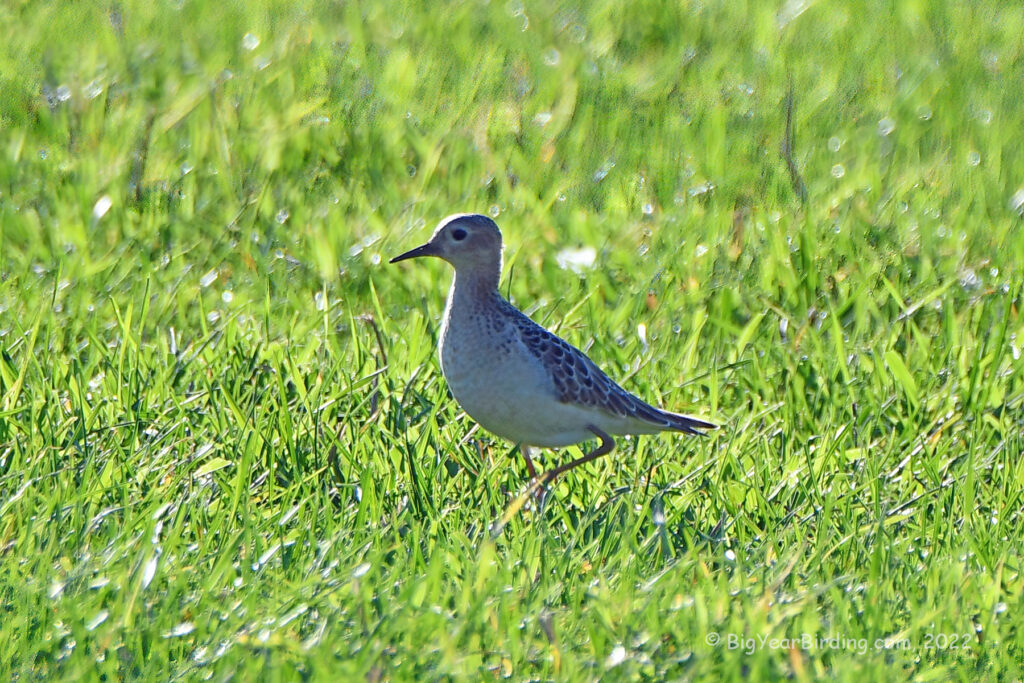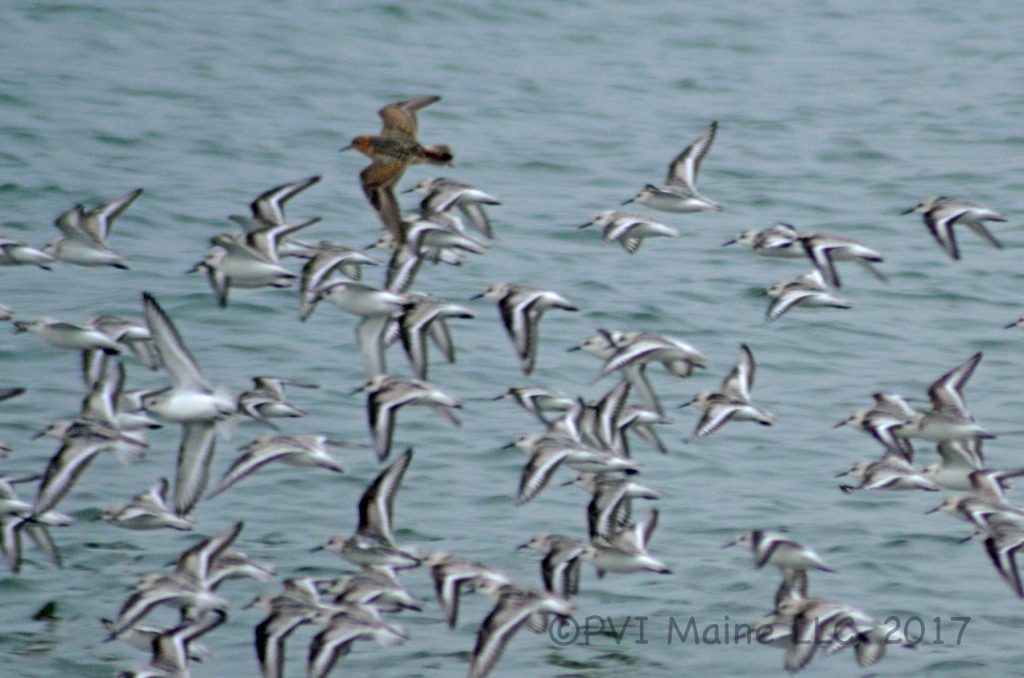
The Buff-breasted Sandpiper is a medium-sized shorebird that belongs to the family Scolopacidae. They are roughly 8-10 inches in length and have a wingspan of around 18-20 inches. On average, these sandpipers weigh between 2.3 and 3.5 ounces. They have a distinctive buff-colored breast, hence their name. The buff breast is contrasted by a white belly and black legs. The head and back are brownish-gray, and the tail is slightly darker than the rest of the body.

Buff-breasted Sandpipers breed in the Arctic tundra of North America and Siberia, where they make their nests in mossy areas or near ponds. During the fall, they migrate to South America, where they spend the winter months in grasslands and wetlands. In the spring, they migrate back north to their breeding grounds. These sandpipers are one of the longest migratory shorebirds in the world, traveling up to 9,000 miles each way.
During migration, the Buff-breasted Sandpiper often congregates in large flocks with other shorebirds, such as plovers and godwits. They prefer open grassy areas near wetlands or agricultural fields, where they feed on seeds, insects, and other small invertebrates. They have a unique feeding behavior where they will run or jog, then stop and probe the ground quickly with their bills, repeating this motion as they search for food.
The Buff-breasted Sandpiper has faced habitat loss and degradation, primarily due to human development, agriculture, and oil and gas exploration in their breeding and wintering grounds. Conservation efforts have been put in place to help protect their habitats and reduce disturbance during migration. Additionally, there have been efforts to study their migration patterns and breeding habits to better understand their population dynamics and conservation needs.

In conclusion, the Buff-breasted Sandpiper is a fascinating shorebird that stands out with its distinctive buff-colored breast. They are medium-sized and weigh between 2.3 and 3.5 ounces. They migrate long distances, up to 9,000 miles each way, from their breeding grounds in the Arctic tundra to their wintering grounds in South America. During migration, they often congregate in large flocks with other shorebirds and prefer open grassy areas near wetlands or agricultural fields for feeding. Conservation efforts have been put in place to protect their habitats and population.

